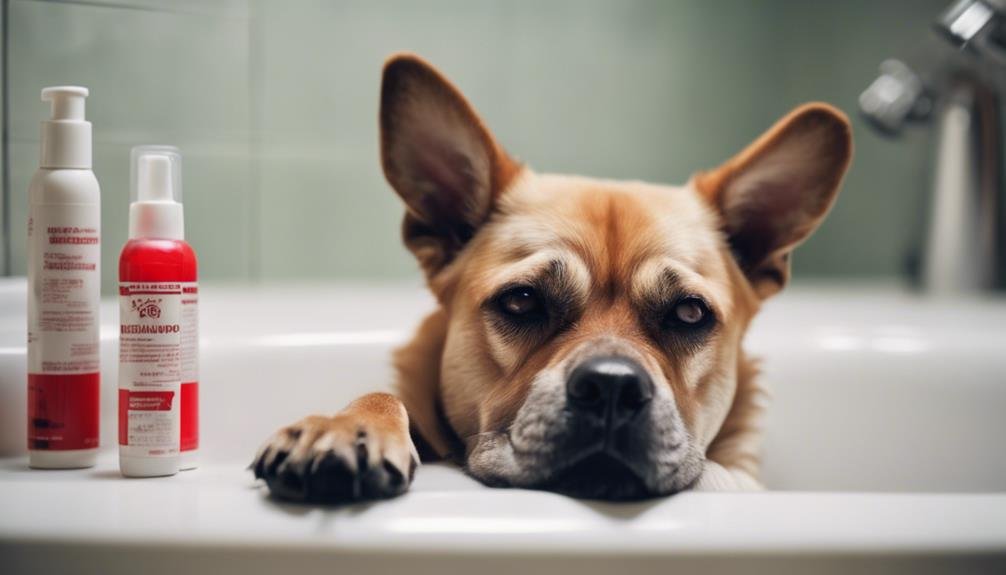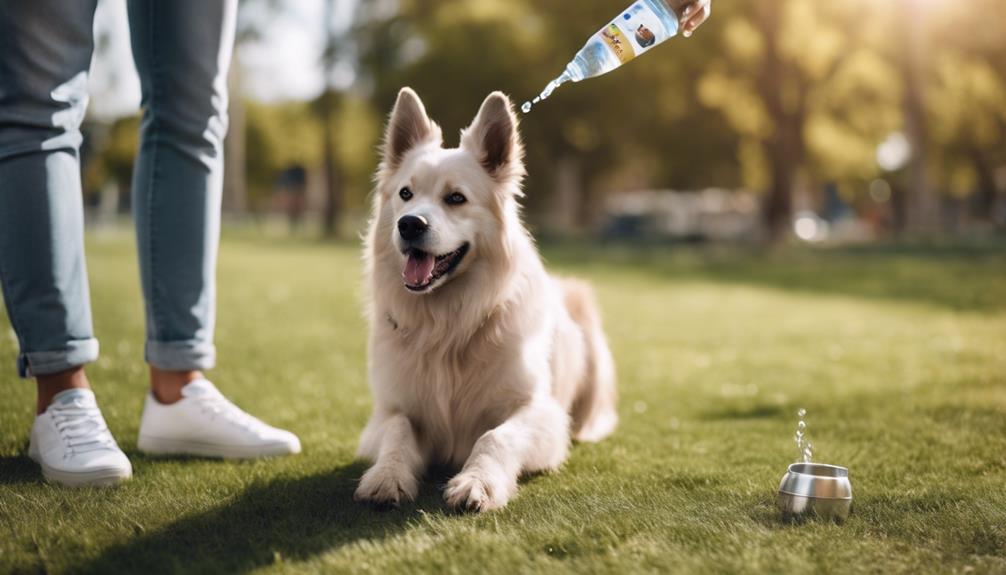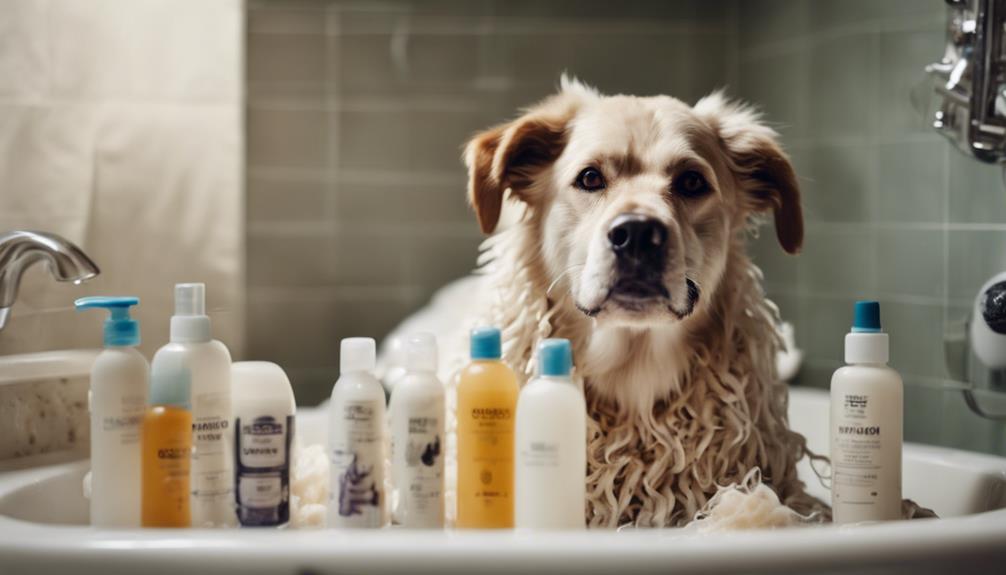Skin irritations in dogs can be a common concern for pet owners, prompting a need to understand the root causes and effective treatment methods for dog rashes. From allergies to infections, various factors can trigger these dermatological issues in our furry companions.
By exploring the diagnostic techniques used by veterinarians and the diverse treatment options available, pet owners can take a proactive approach to managing their dog's skin conditions. Additionally, the incorporation of home remedies and preventive strategies can prove invaluable in promoting optimal skin health for dogs.
Understanding the complexities surrounding dog rashes is essential for every pet owner seeking to ensure their canine friend's overall well-being.
Key Takeaways
- Dog rashes can stem from various causes like allergies, parasites, infections, and genetic predispositions.
- Treatment involves medications, shampoos, dietary changes, and topical ointments prescribed by a veterinarian.
- Home remedies like oatmeal baths, apple cider vinegar, and regular grooming can help prevent and soothe dog rashes.
- Prompt identification and management of dog rashes are crucial to prevent worsening and ensure the well-being of your pet.
Symptoms of Dog Rashes
When a dog develops a rash, common symptoms such as reddened skin, itchiness, red bumps, hair loss, and scabs may be observed. These symptoms can vary in intensity depending on the underlying cause of the rash.
Reddened skin may indicate inflammation, while itchiness can lead to excessive scratching or licking by the dog. Red bumps and scabs are often signs of skin irritation or infection, with hair loss potentially indicating more severe issues.
Recognizing these symptoms promptly is crucial for early intervention and treatment to alleviate discomfort and prevent further complications. If these signs persist or worsen, consulting a veterinarian for a proper diagnosis and treatment plan is recommended.
Causes of Dog Rashes
Symptoms of dog rashes, such as reddened skin, itchiness, red bumps, hair loss, and scabs, can be attributed to various underlying causes that include heat rash, allergies, parasitic infestations, exposure to irritants like plants, yeast or bacterial infections, genetic predispositions, and more. These causes can trigger skin reactions in dogs, leading to discomfort and visible skin issues.
To better understand the root of these rashes, consider the following:
- Heat Rash
- Allergies
- Fleas or Other Parasites
- Poison Ivy, Poison Oak, or Exposure to Another Plant
Diagnosing Dog Rashes

To accurately identify the underlying causes of dog rashes, veterinarians employ diagnostic methods. These include skin samples, blood tests, skin cultures, allergy testing, and consultations to determine appropriate treatment plans.
Skin samples are crucial for examining under a microscope to identify potential parasites, bacteria, or fungi. Blood tests can reveal underlying health conditions contributing to skin issues. Skin cultures help identify specific bacteria or fungi present on the skin. Allergy testing can pinpoint potential allergens triggering the rash.
Consulting with a veterinarian allows for a comprehensive assessment of the dog's overall health and history to tailor a suitable treatment plan. These diagnostic techniques play a vital role in effectively addressing and managing dog rashes.
Treating Dog Rashes
In addressing dog rashes, veterinarians typically employ a combination of medications, topical treatments, and dietary adjustments to alleviate symptoms and promote skin health. When treating dog rashes, the following approaches are commonly used:
- Medications: Veterinary-prescribed medications are often necessary to treat skin infections and manage underlying conditions like hypothyroidism.
- Prescription Medicated Shampoos: Special shampoos prescribed by veterinarians can help alleviate skin irritations and promote healing.
- Flea, Tick, and Mite Medications: Medications designed to eliminate these parasites are crucial in addressing rashes caused by infestations.
- Colloidal Oatmeal Shampoos: Shampoos containing colloidal oatmeal can soothe irritated skin and provide relief from itching and inflammation.
Medications for Dog Rashes

When addressing dog rashes, one crucial aspect to consider is the effective use of medications to alleviate symptoms and address underlying skin conditions. Medications play a vital role in treating various skin issues in dogs.
For skin infections, medications such as antibiotics or antifungal drugs are commonly prescribed to combat bacterial or fungal infections. In cases of allergies, antihistamines can help reduce itching and inflammation.
Medicated shampoos containing ingredients like benzoyl peroxide or chlorhexidine are beneficial for treating skin conditions and maintaining skin health. Additionally, corticosteroids may be prescribed to manage inflammation associated with rashes.
It is essential to follow the veterinarian's recommendations regarding the dosage and duration of medication to ensure the best outcomes for your dog's skin health.
Home Remedies for Dog Rashes
When dealing with dog rashes, pet owners can explore various home remedies to provide relief and aid in the healing process.
Here are four effective home remedies for dog rashes:
- Oatmeal Baths: Soothe your dog's irritated skin with calming oatmeal baths.
- Apple Cider Vinegar: Use this natural antiseptic to help clean and heal the affected areas.
- Coconut Oil: Moisturize your dog's skin and benefit from its antibacterial properties.
- Aloe Vera Gel: Apply aloe vera gel for its cooling and healing effects on the rash.
Prevention of Dog Rashes

Effective prevention strategies play a crucial role in mitigating the occurrence of dog rashes and maintaining optimal skin health in canine companions. To prevent dog rashes, consider the following preventive measures:
| Prevention Measures | Description |
|---|---|
| Regular Grooming | Brushing your dog's coat regularly helps to remove dirt and debris, preventing skin irritation. |
| Proper Nutrition | Providing a balanced diet rich in essential nutrients supports overall skin health and strengthens the immune system. |
| Hygiene Practices | Regular baths using dog-friendly shampoos and maintaining a clean living environment help prevent skin infections and irritations. |
Dietary Considerations for Dog Rashes
Consider incorporating dietary modifications to address dog rashes, as nutrition plays a significant role in maintaining skin health and addressing potential underlying causes of skin irritations in dogs. Making mindful choices about what your dog eats can help alleviate existing rashes and prevent future skin issues.
- Omega-3 Fatty Acids: Incorporating foods rich in omega-3 fatty acids such as salmon or flaxseed oil can help reduce inflammation and promote healthy skin.
- Protein Sources: Opt for high-quality protein sources like lean meats or eggs to support skin repair and regeneration.
- Limited Allergens: Identify and eliminate potential food allergens such as wheat or soy that could be triggering skin reactions.
- Hydration: Ensure your dog stays well-hydrated as water is essential for maintaining skin moisture and overall skin health.
Grooming and Bathing Tips

Regular grooming and bathing are essential practices for maintaining your dog's skin health and overall well-being. Proper grooming helps to remove dirt, debris, and excess oils that can contribute to skin irritation and rashes. When bathing your dog, use a gentle, hypoallergenic shampoo specifically formulated for dogs to avoid stripping their skin of natural oils. Ensure you dry your dog thoroughly after bathing, especially in areas prone to moisture accumulation like skin folds. Additionally, regular brushing helps to distribute natural oils, prevent matting, and stimulate blood flow to the skin. Below is a table highlighting key grooming and bathing tips:
| Grooming and Bathing Tips |
|---|
| Use a gentle, dog-specific shampoo |
| Dry your dog thoroughly after bathing |
| Regularly brush your dog's coat |
| Pay attention to skin folds and areas prone to moisture accumulation |
| Trim your dog's nails regularly |
Conclusion
In conclusion, understanding the causes, symptoms, and treatment options for dog rashes is essential for maintaining the well-being of our canine companions. By being knowledgeable about diagnostic methods, treatment modalities, home remedies, and preventive measures, pet owners can effectively address and manage their dog's skin conditions.
Taking proactive steps and being attentive to their dermatological needs can help ensure optimal skin health for dogs. Stay informed and proactive in caring for your pet's skin to promote their overall health and well-being.




